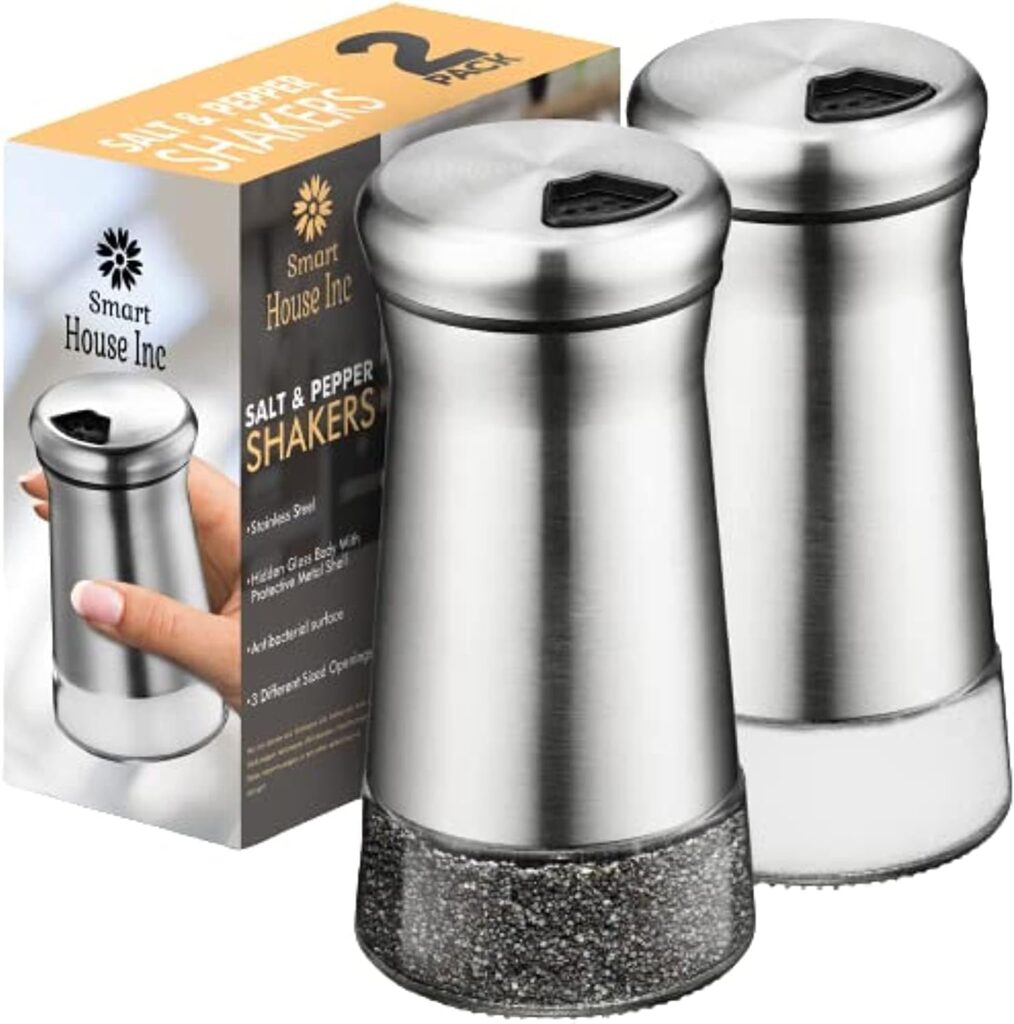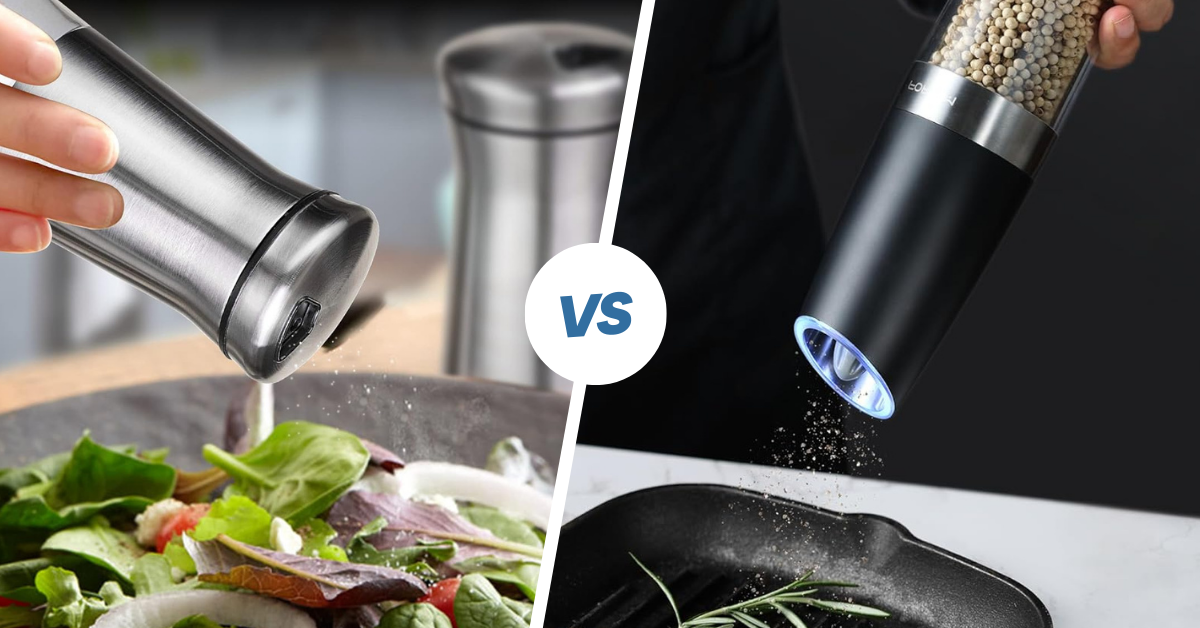In the heart of every kitchen, the spice shaker reigns supreme, adding depth, flavor, and personality to culinary creations.
As the culinary world evolves, so too do the tools we use in our quest to perfect the art of seasoning. The age-old debate between traditional spice shakers and their electric counterparts has ignited a flavorful conversation among home cooks and professional chefs alike.
In this article, we’ll look at both kinds of shakers to figure out which is the real king in the kitchen.

Traditional Spice Shaker
The traditional spice shaker is a classic kitchen tool that has been a staple for generations. It typically consists of a container with a perforated top, allowing you to shake out a controlled amount of spice onto your food.

Electric Spice Shaker
In recent years, electric spice shakers have entered the market, adding a touch of innovation to the traditional spice dispensing method. These devices often come with a motorized grinder and various settings for adjusting the coarseness of the spices.
Comparing Traditional and Electric Salt and Pepper Shaker
Operation
Traditional: Manual operation involves shaking the container to dispense spices.
Electric: Motorized mechanism for hands-free operation; usually operated with a button or switch.
Dispensing Control
Traditional: Dispensing control is dependent on the user’s manual shaking and pouring.
Electric: Precise control over the amount of spice dispensed with adjustable settings.
Power Source
Traditional: Relies on human energy for operation.
Electric: Powered by electricity; may require batteries or a power outlet.
Ease of Use
Traditional: Simple and straightforward, but may require physical effort.
Electric: Generally easier to use, especially for those with mobility issues, as it requires minimal physical effort.
Consistency
Traditional: Dispensing consistency may vary based on manual shaking.
Electric: Provides more consistent and uniform dispensing of spices.
Versatility
Traditional: Limited functionality to manual shaking; may not have additional features.
Electric: May come with additional features like adjustable grind settings, timers, or programmable dispensing.
Maintenance
Traditional: Low maintenance; cleaning involves occasional washing.
Electric: Requires occasional cleaning, and battery replacement or recharging for electric models.
Portability
Traditional: Typically more portable as it doesn’t rely on electricity.
Electric: May be less portable due to the need for power sources.
Which Salt and Pepper Shaker is Better?
The choice between a traditional and electric spice shaker depends on individual needs and preferences.
For those valuing simplicity, portability, and a lower upfront cost, a traditional spice shaker may be the better choice.
However, if precision, consistency, and added features like adjustable settings are priorities, an electric spice shaker would be the superior option, despite potentially being pricier and requiring a power source.
Ultimately, the best choice is subjective and hinges on the user’s specific requirements and lifestyle.

